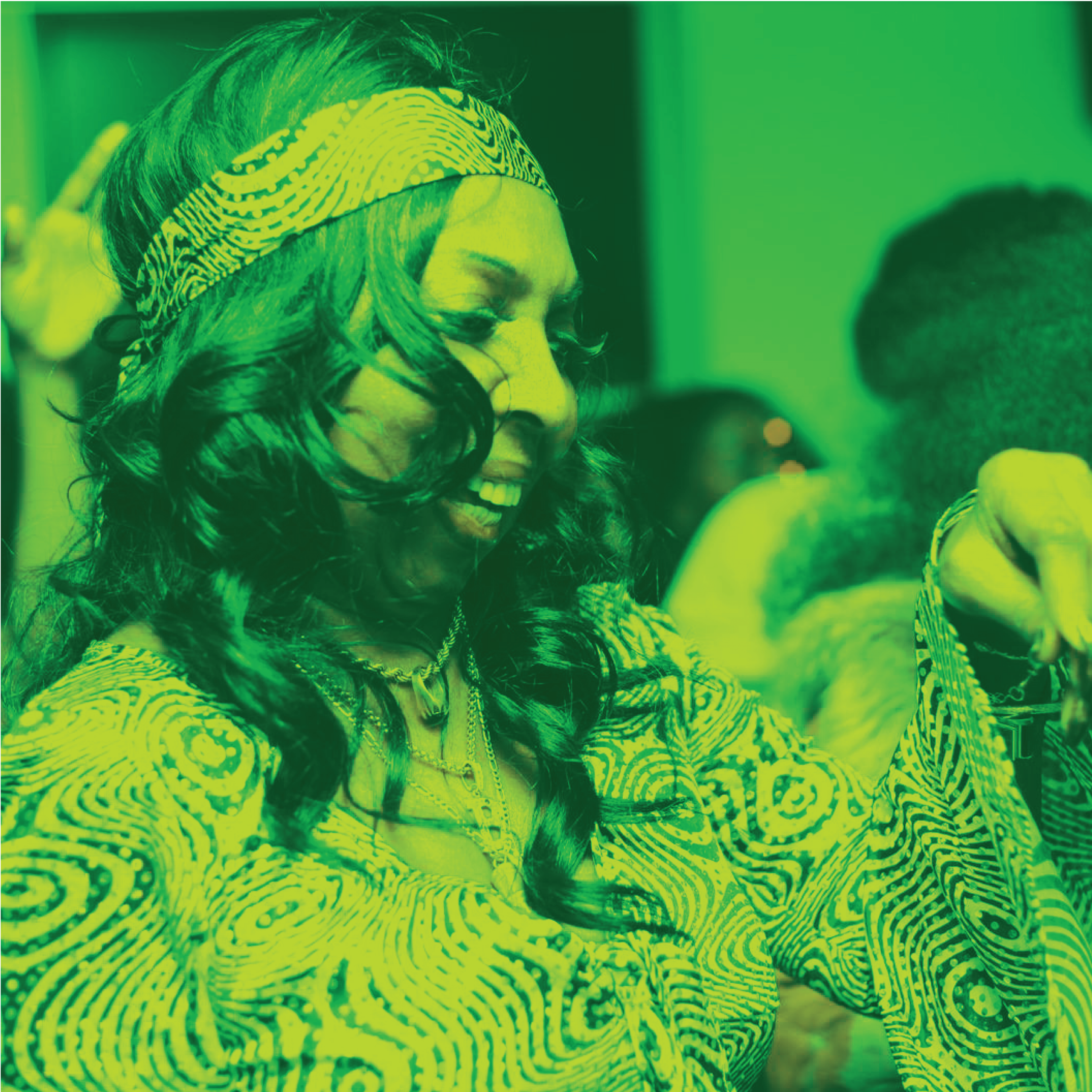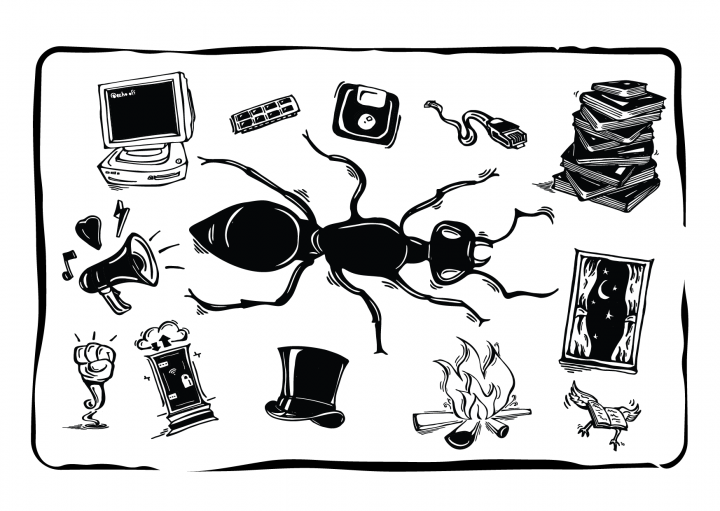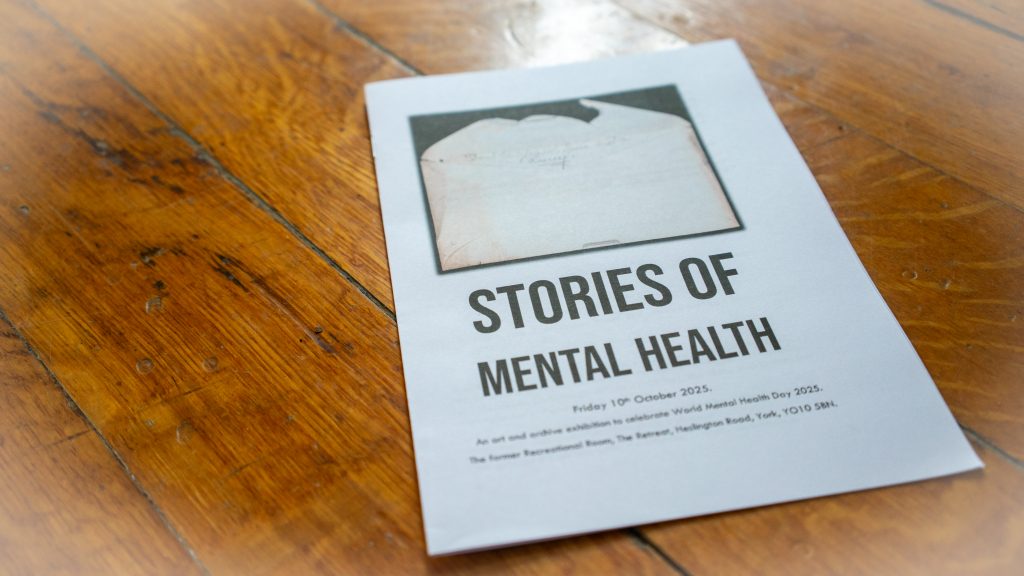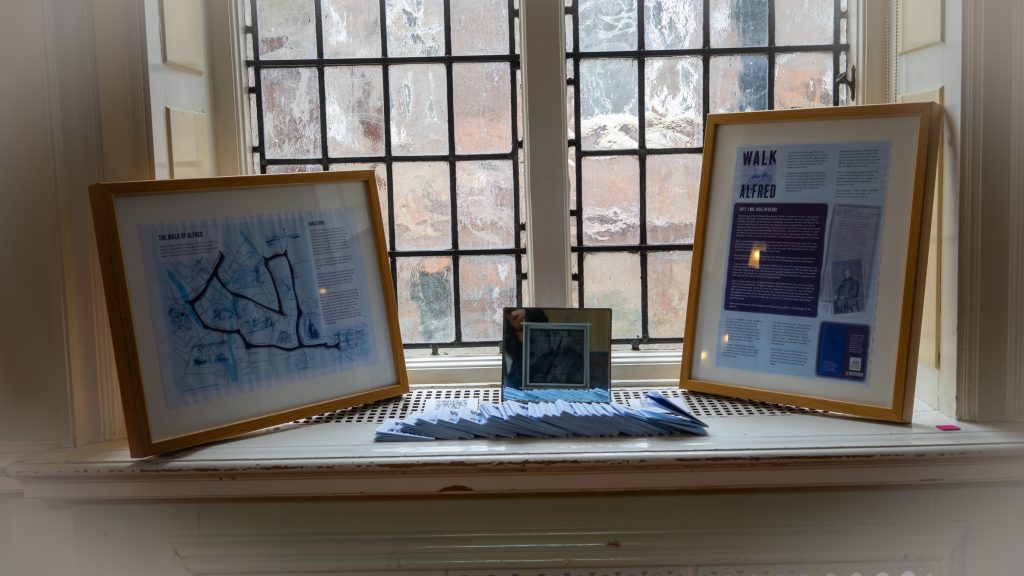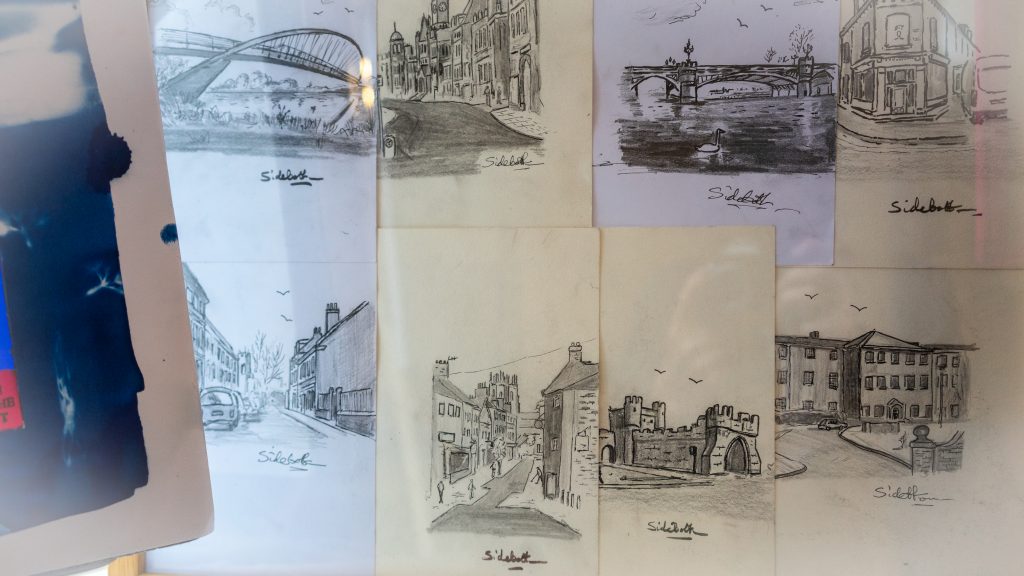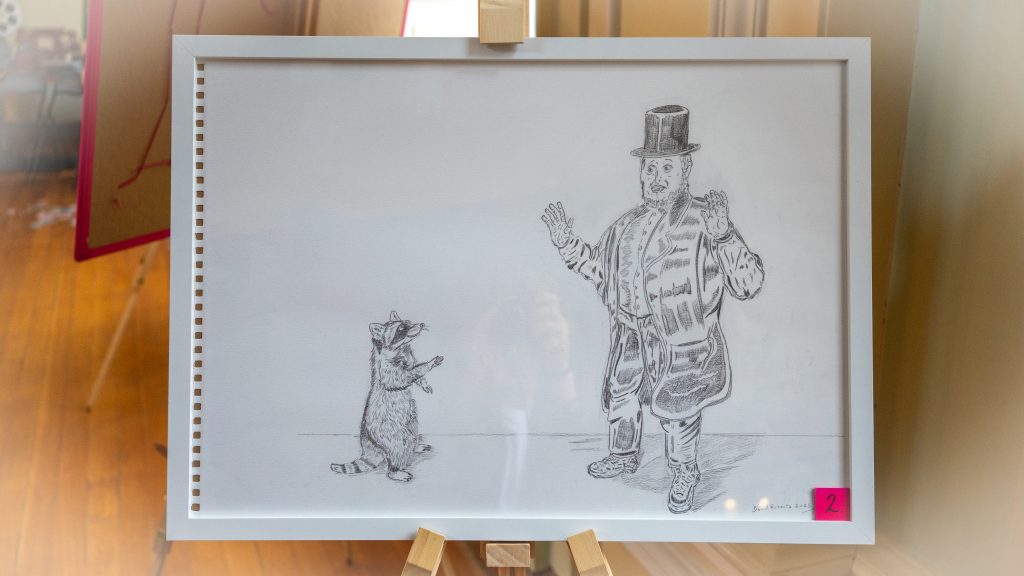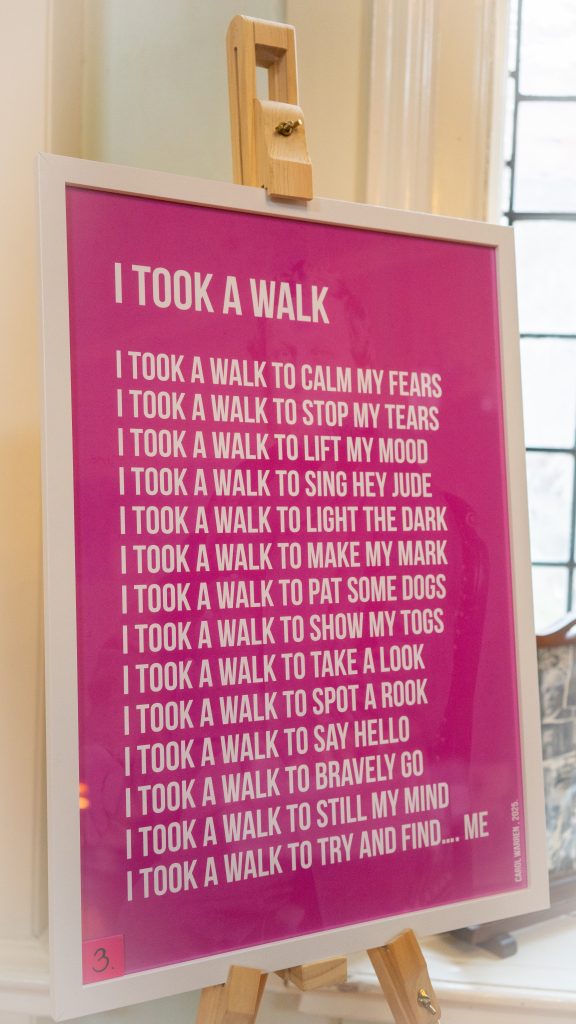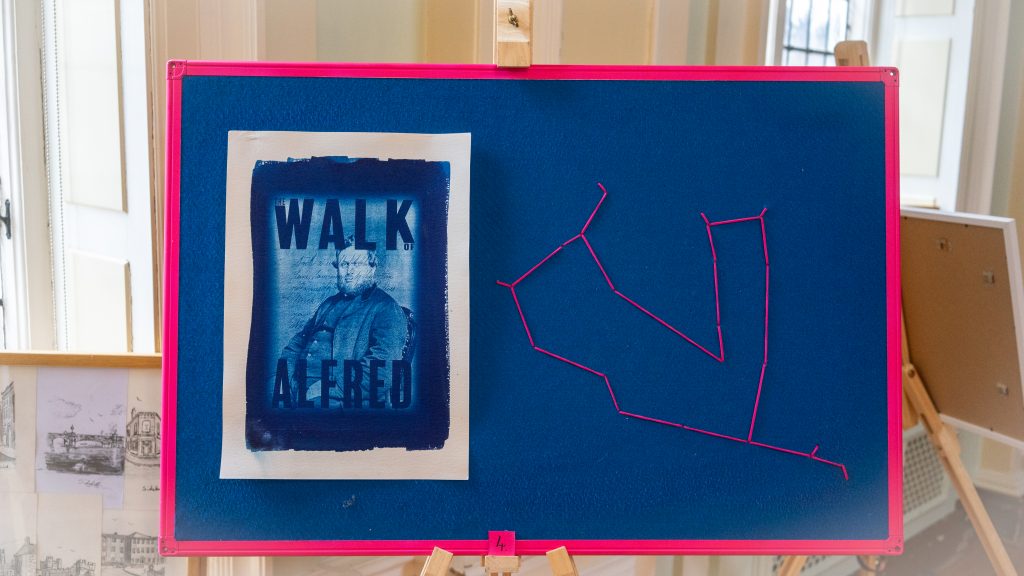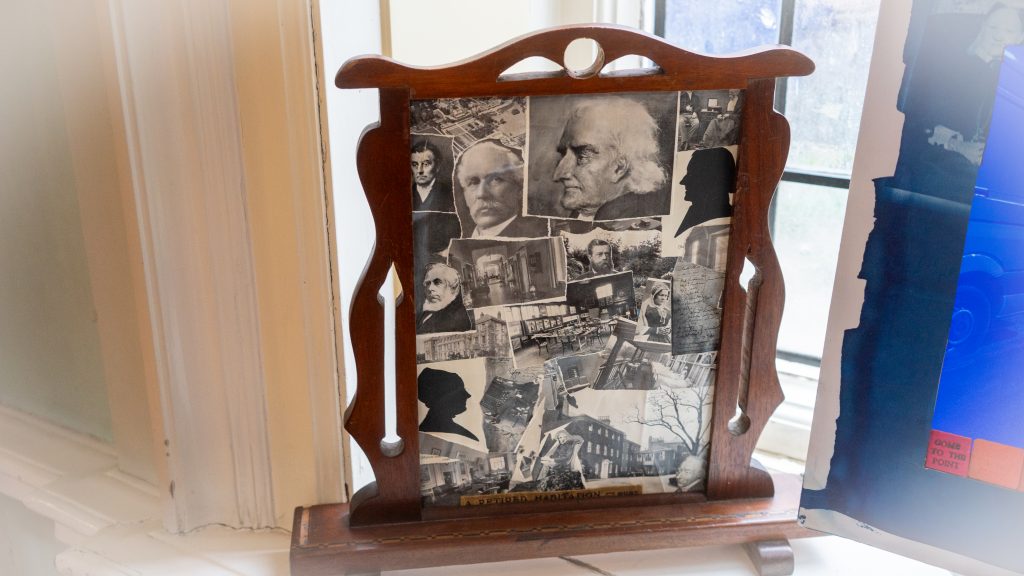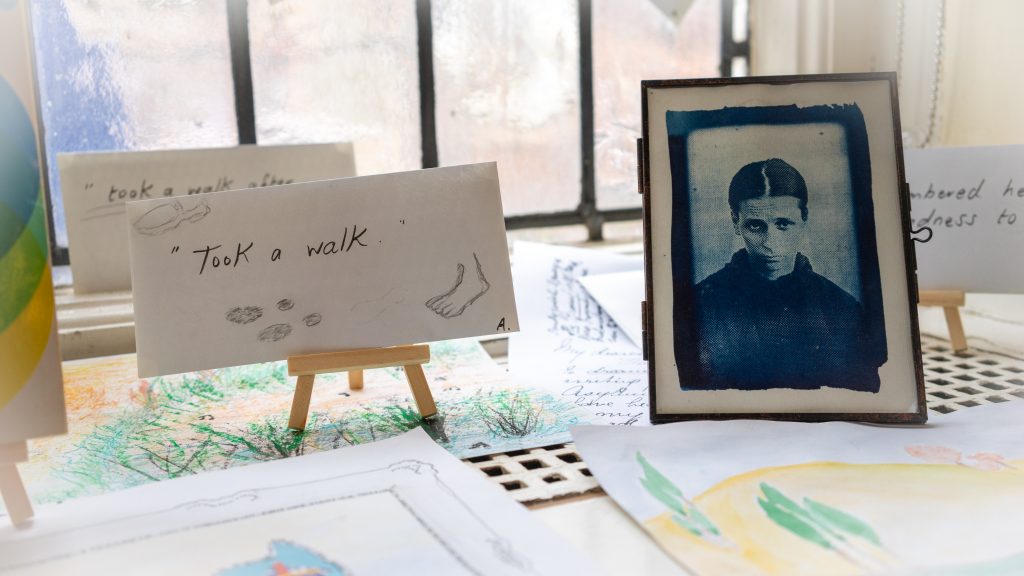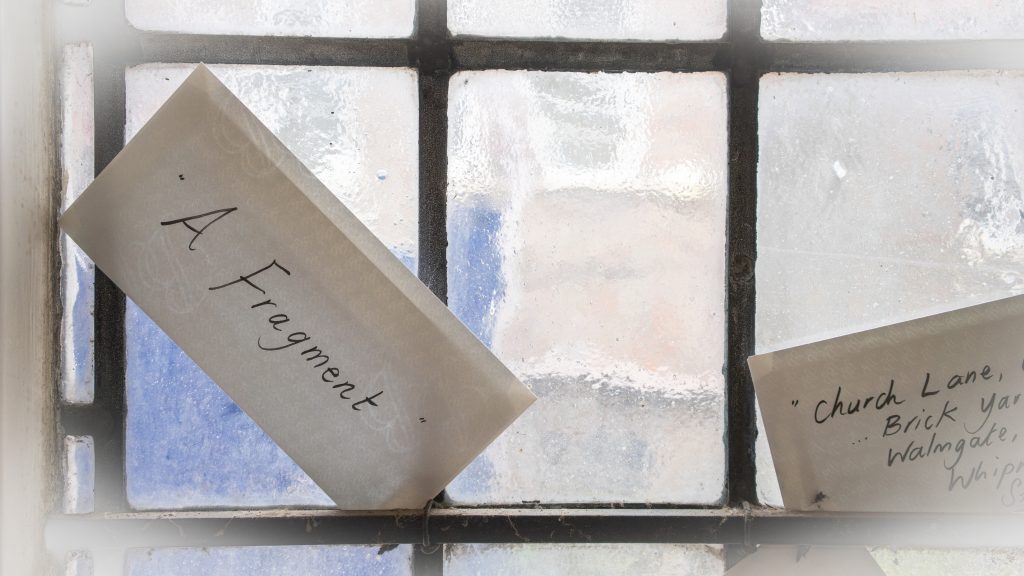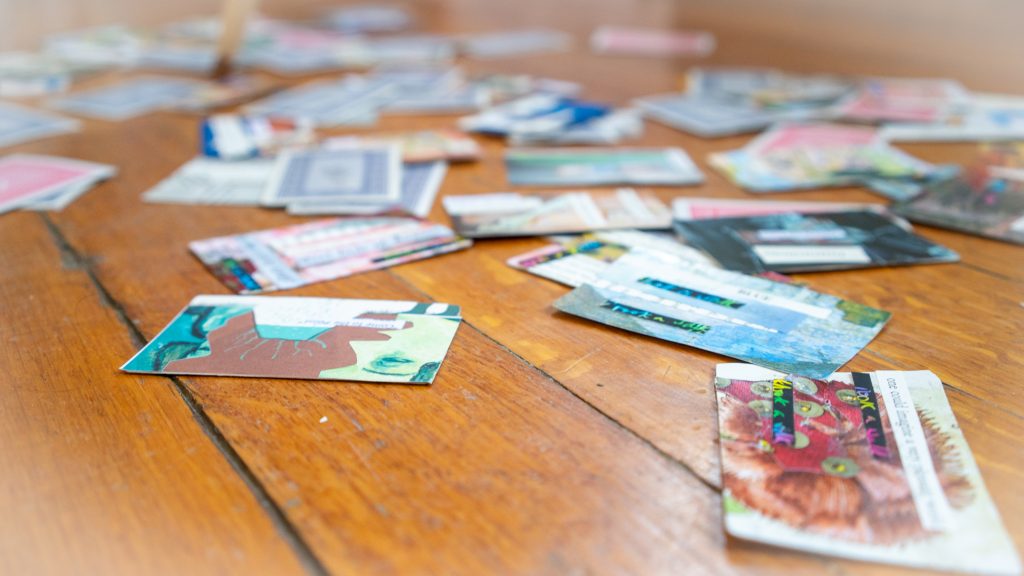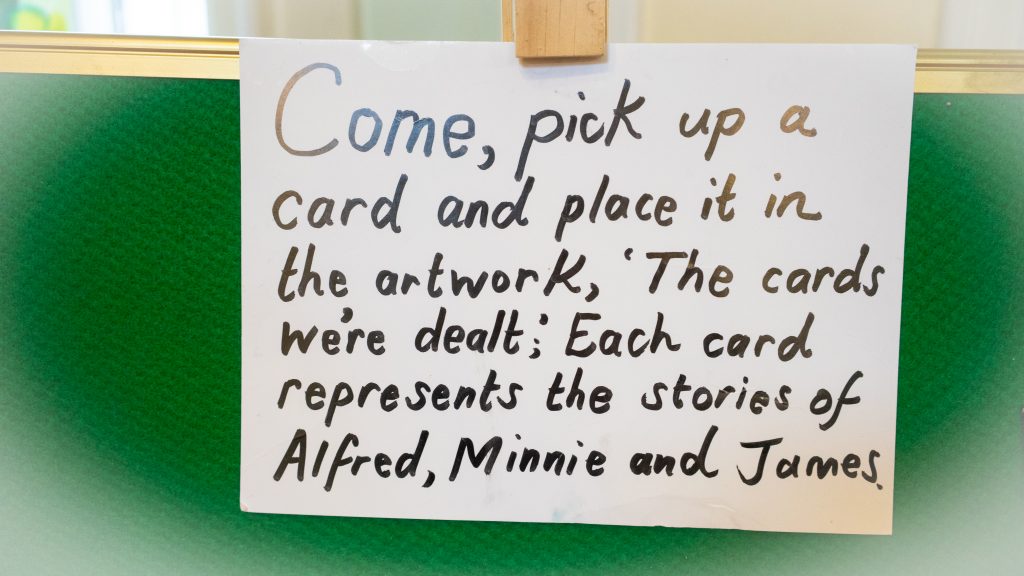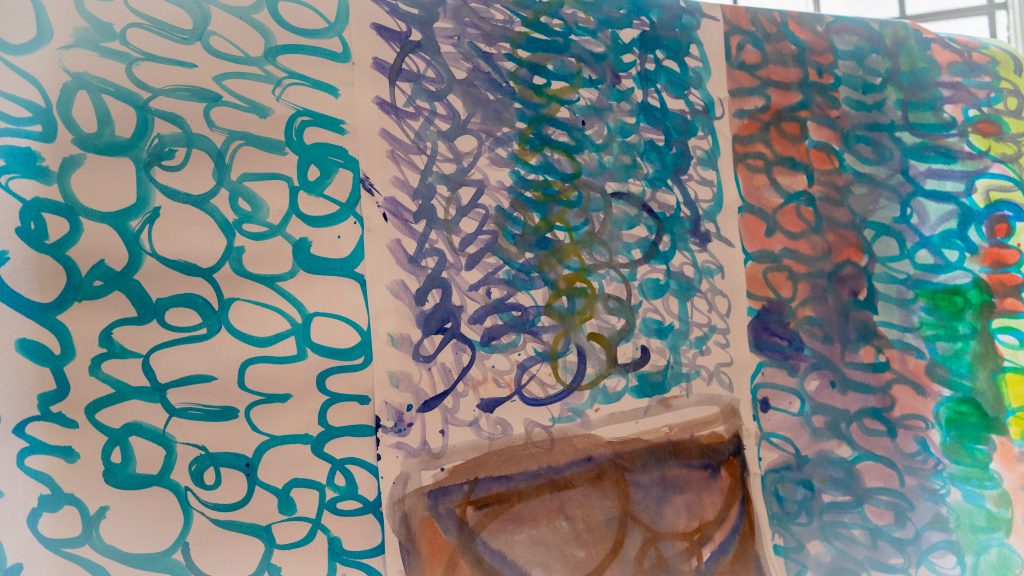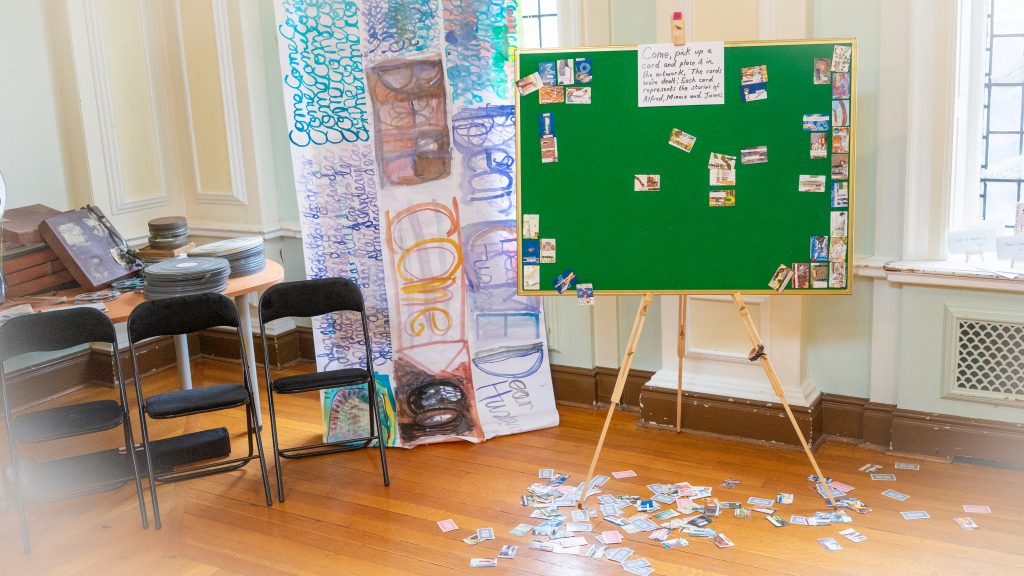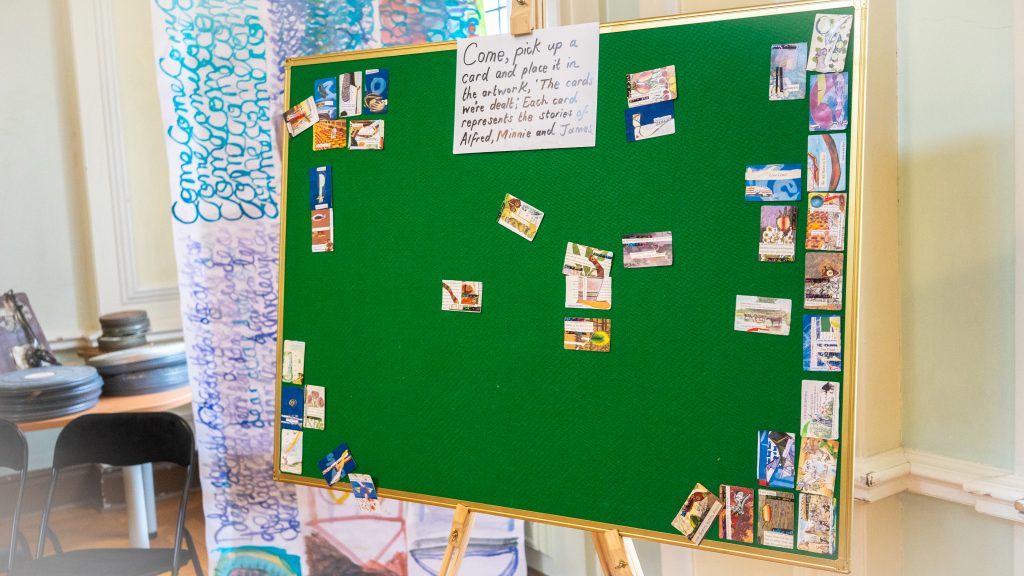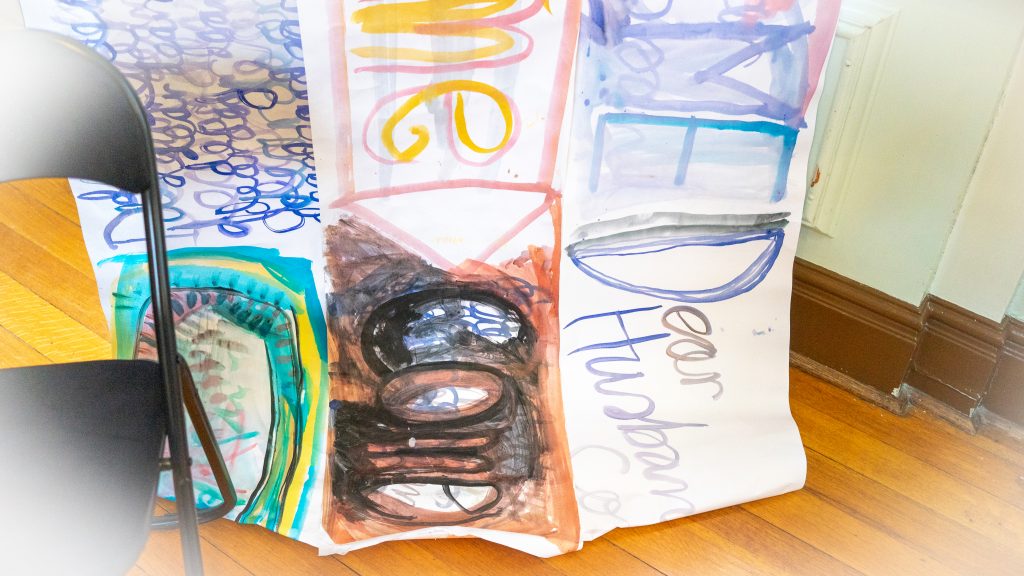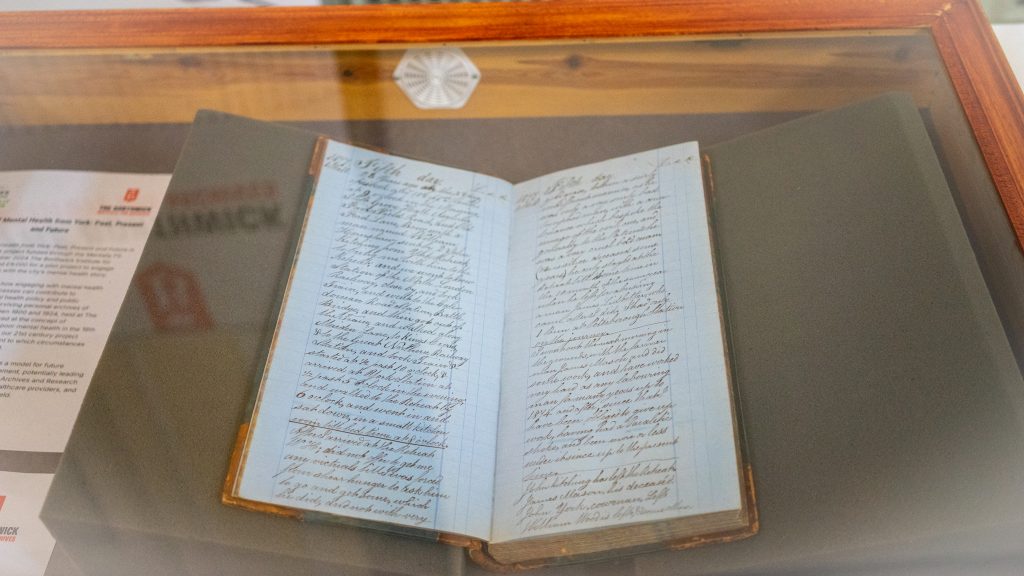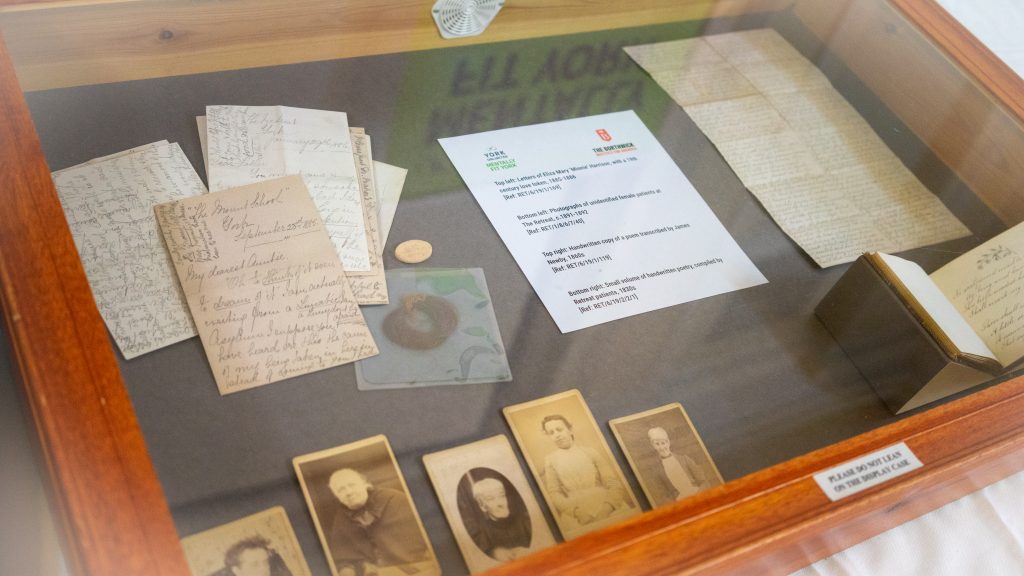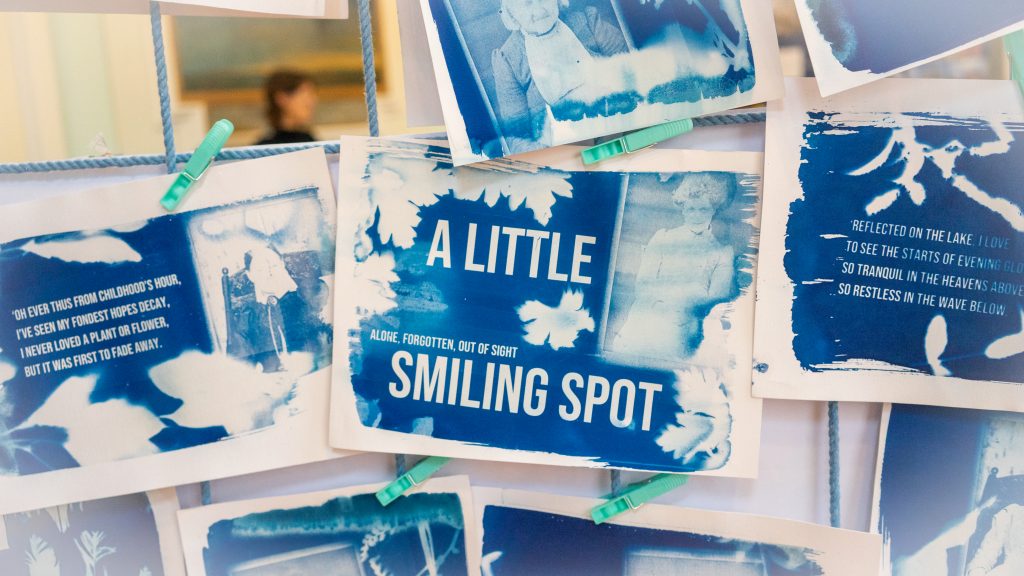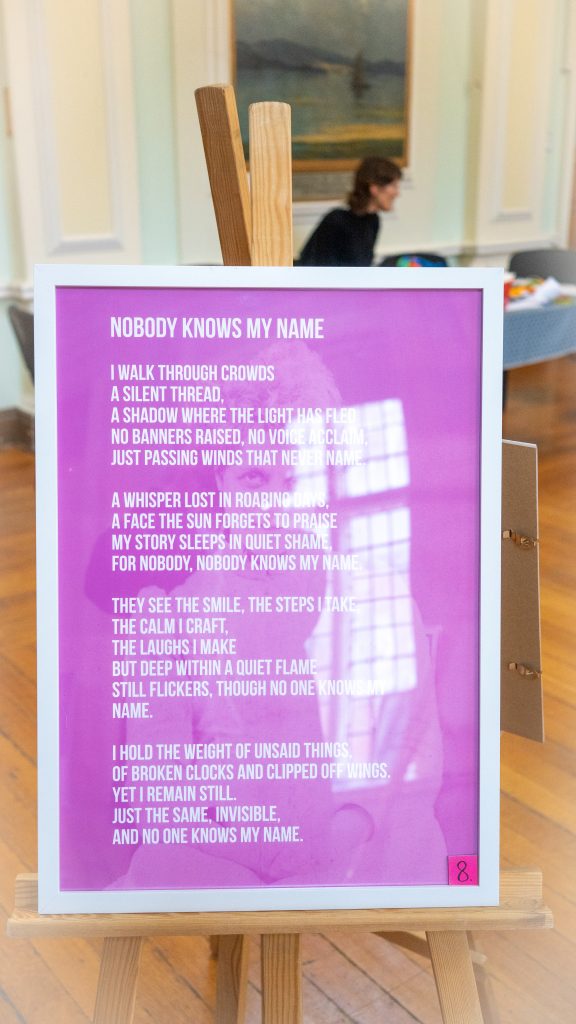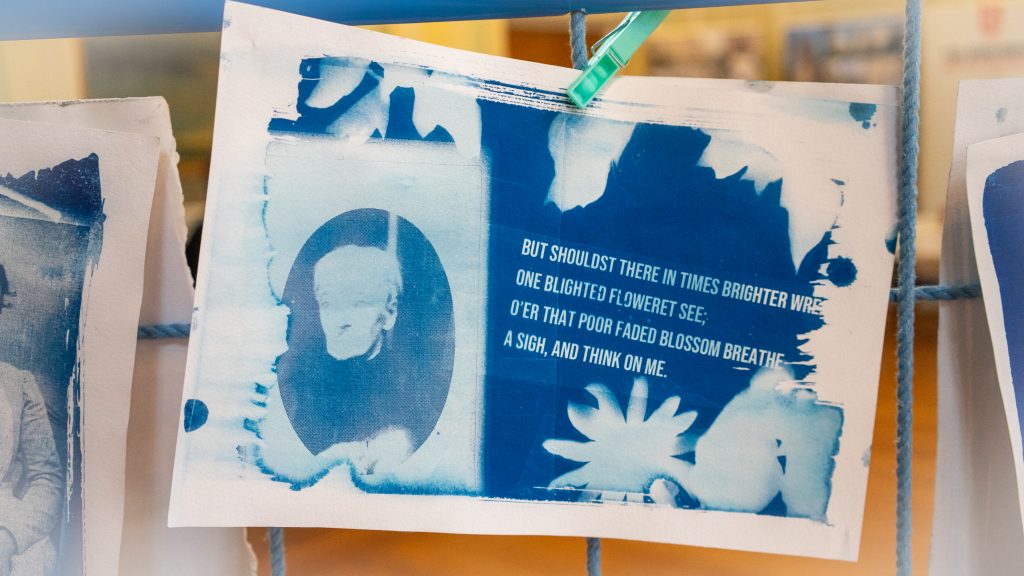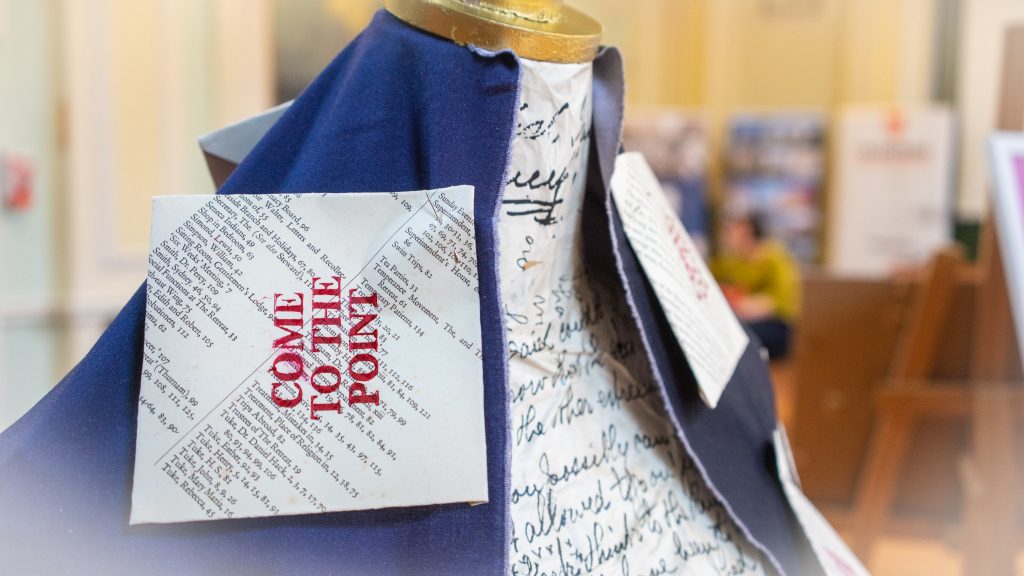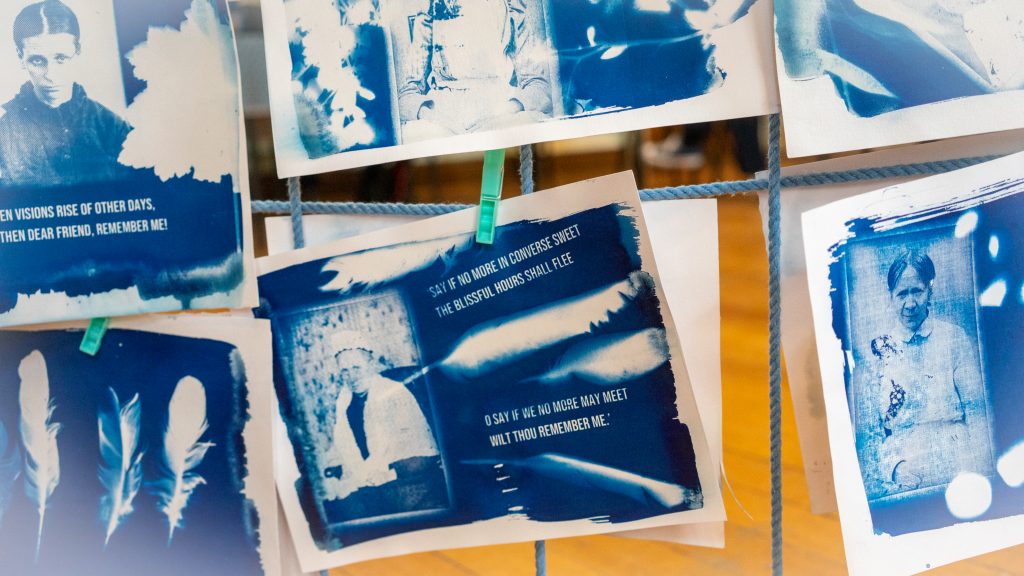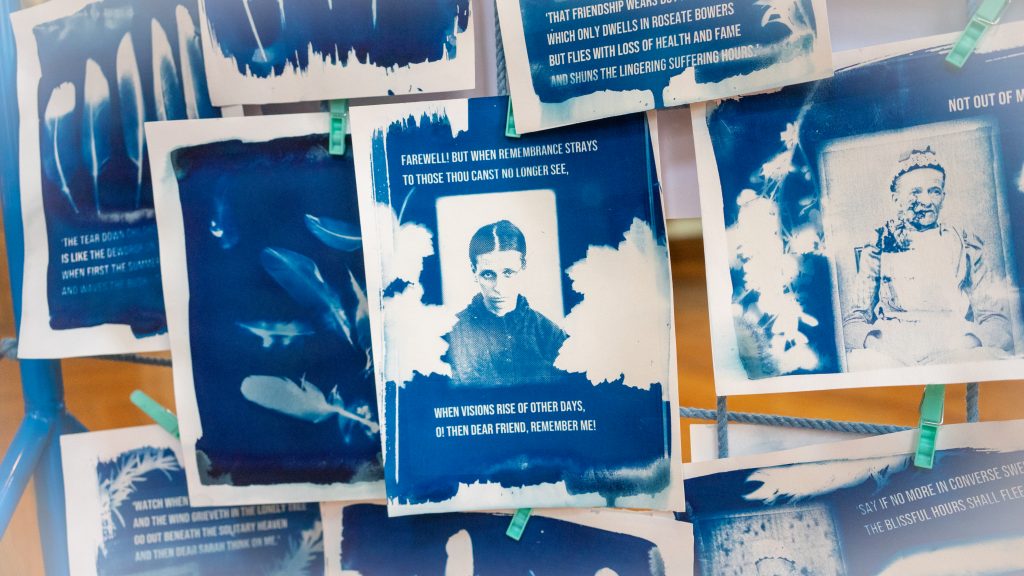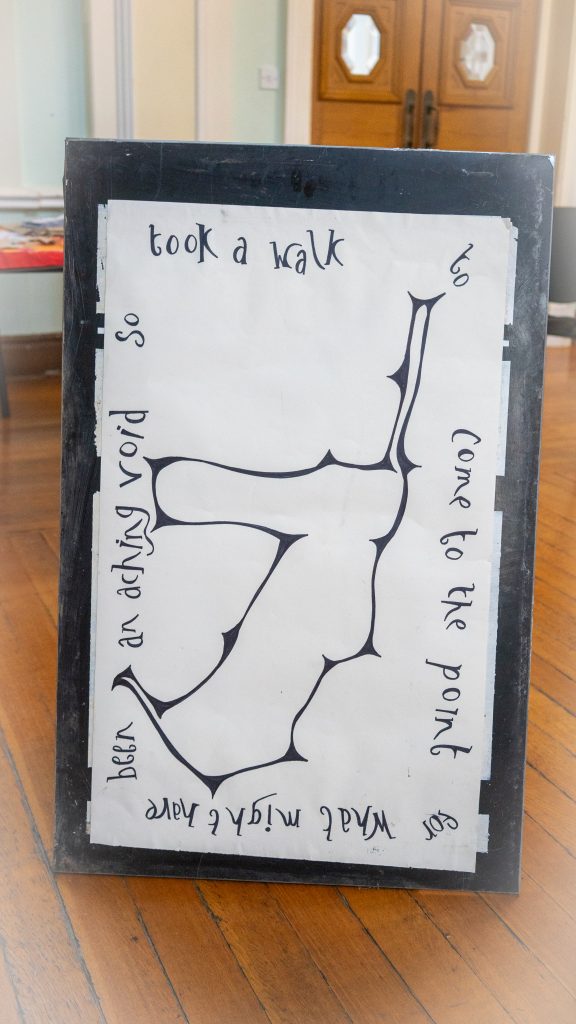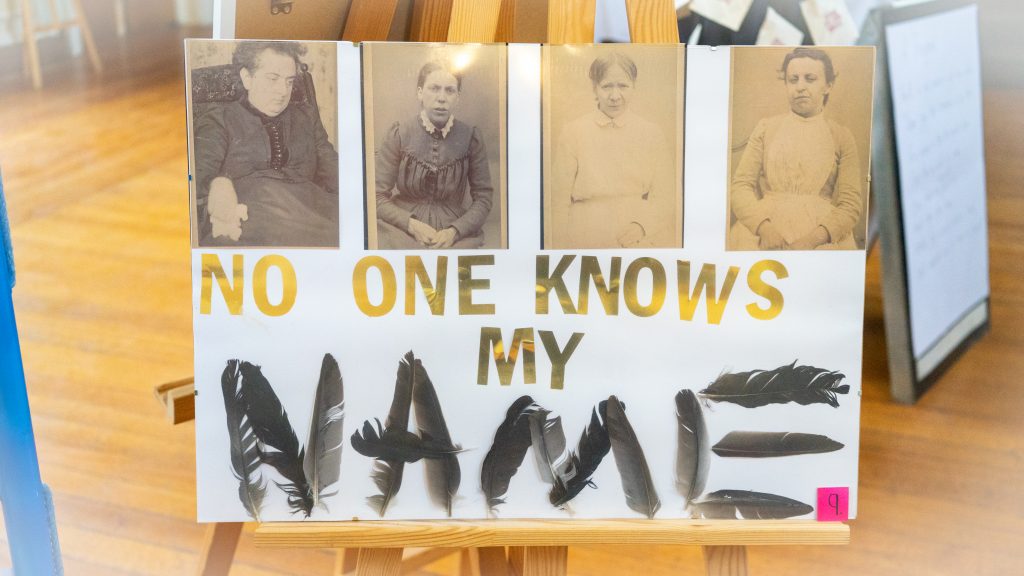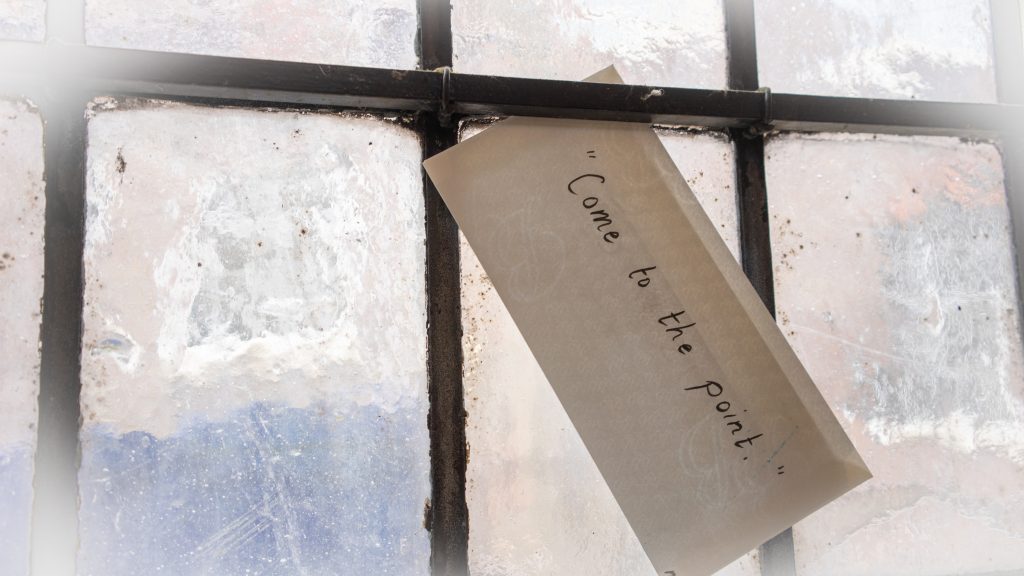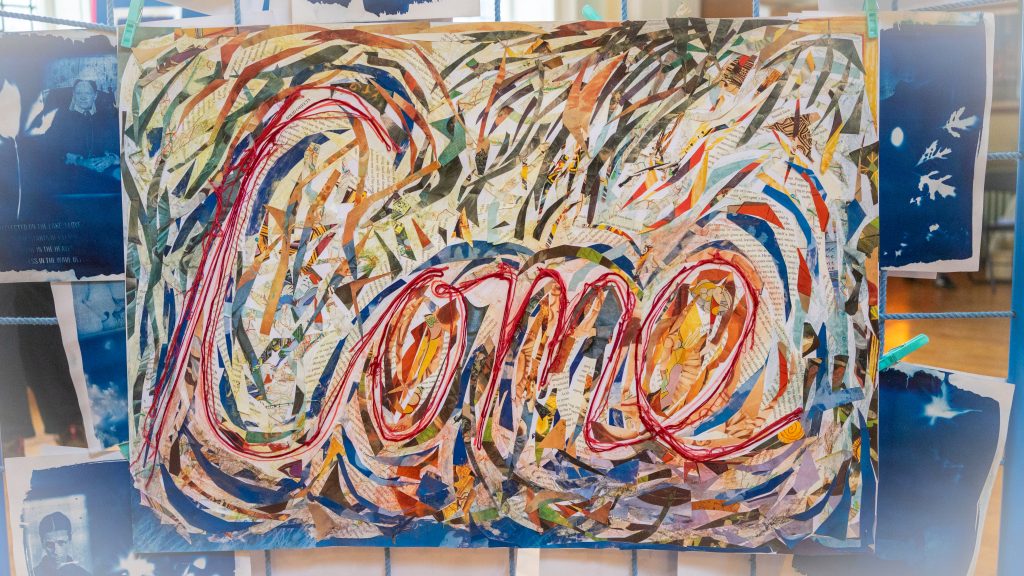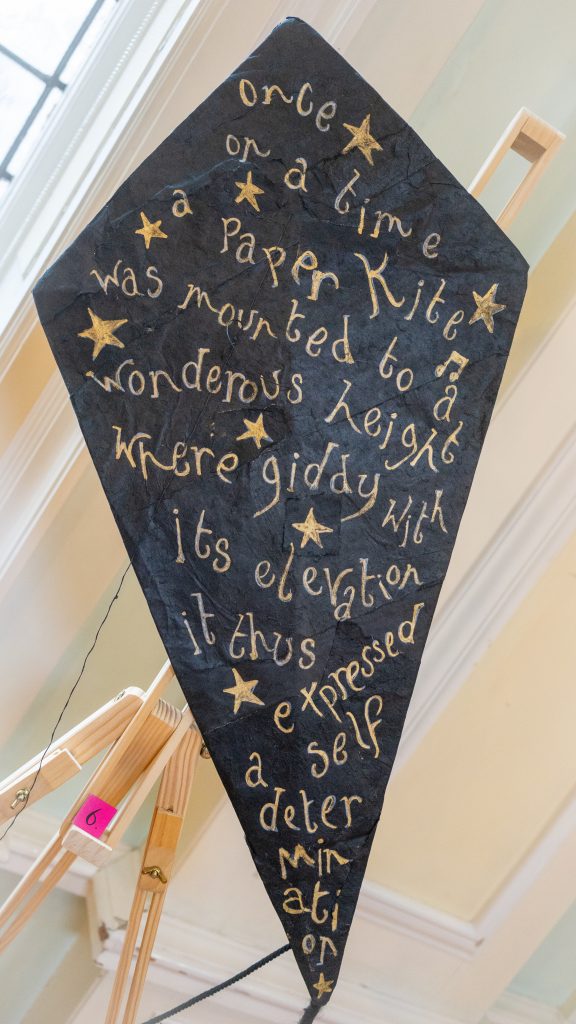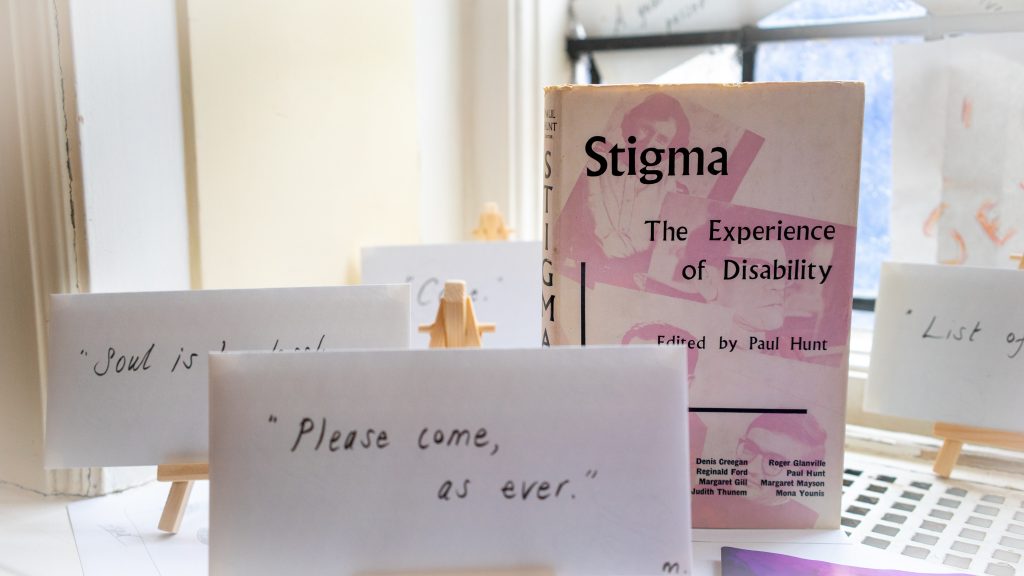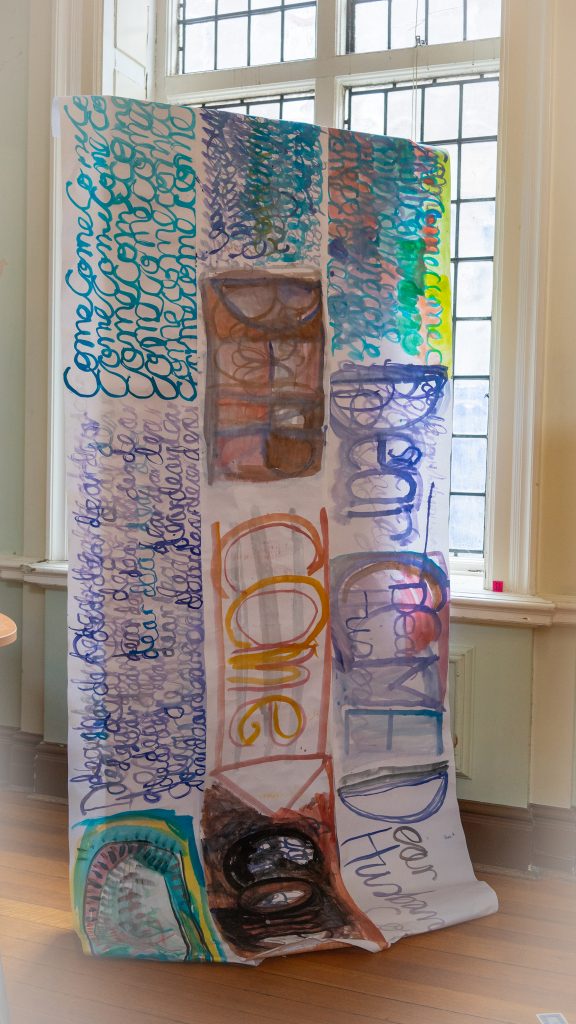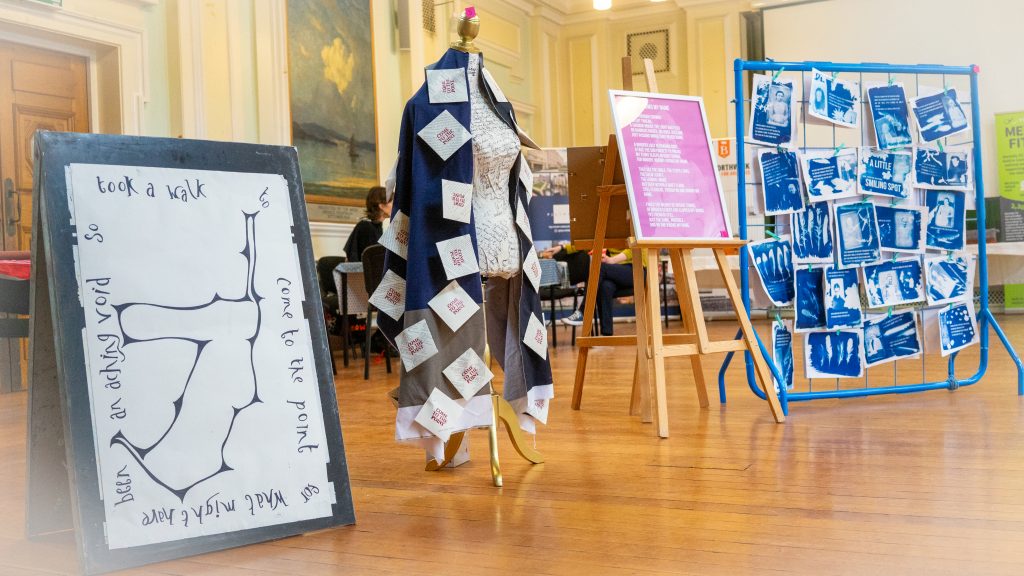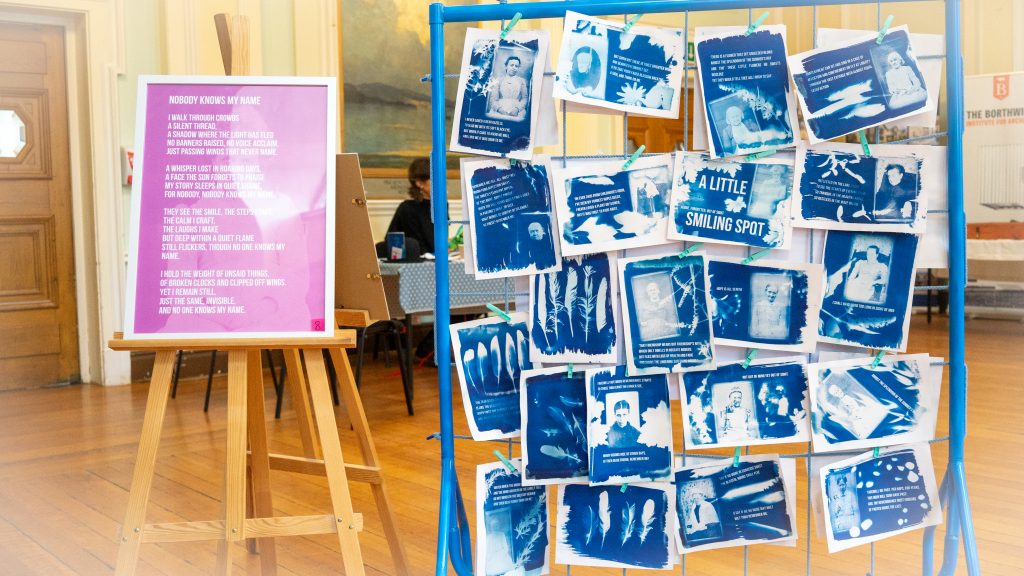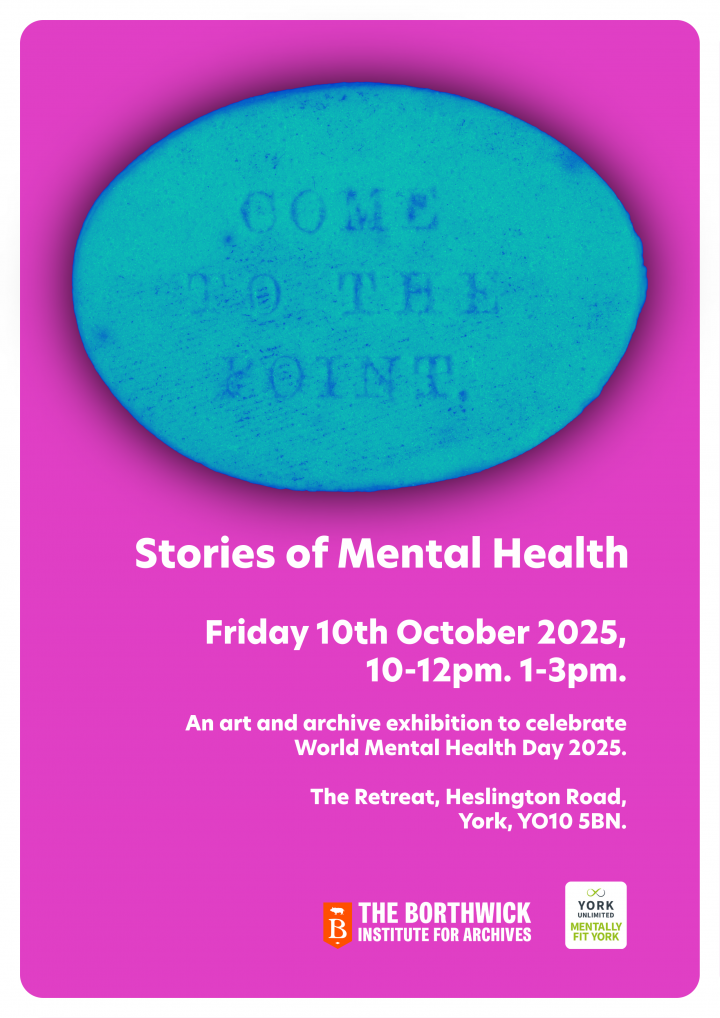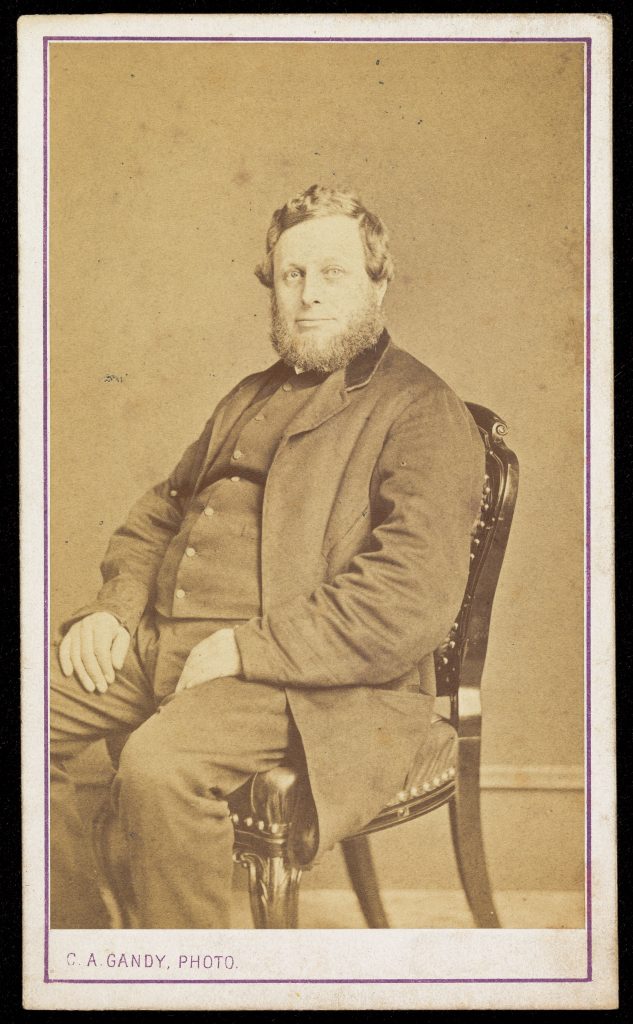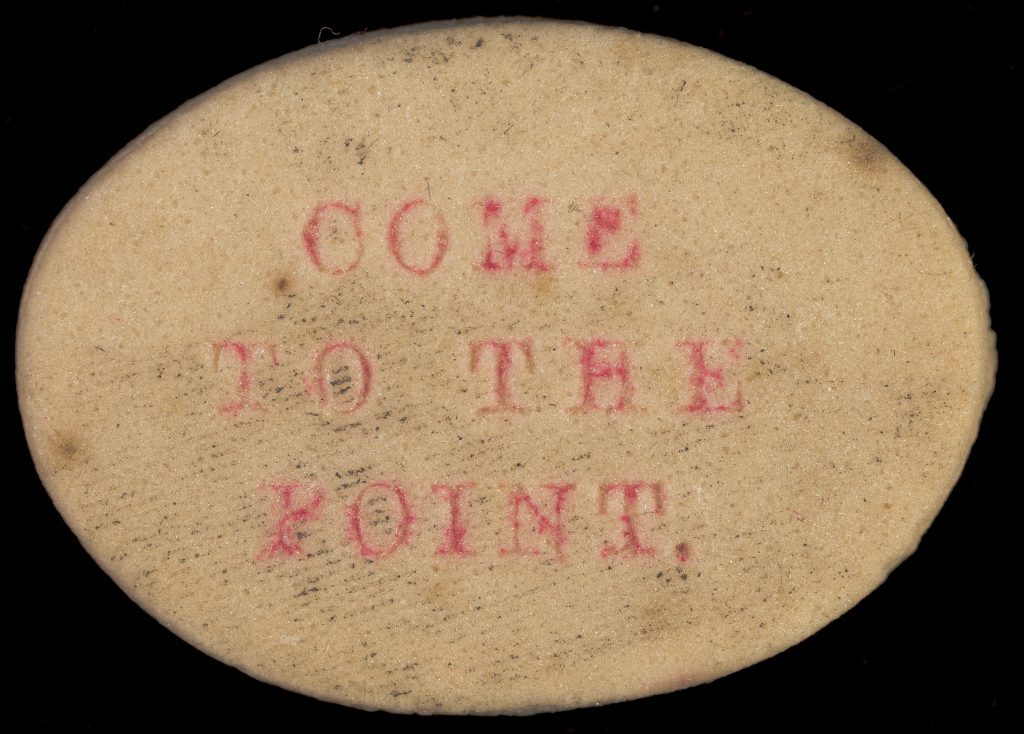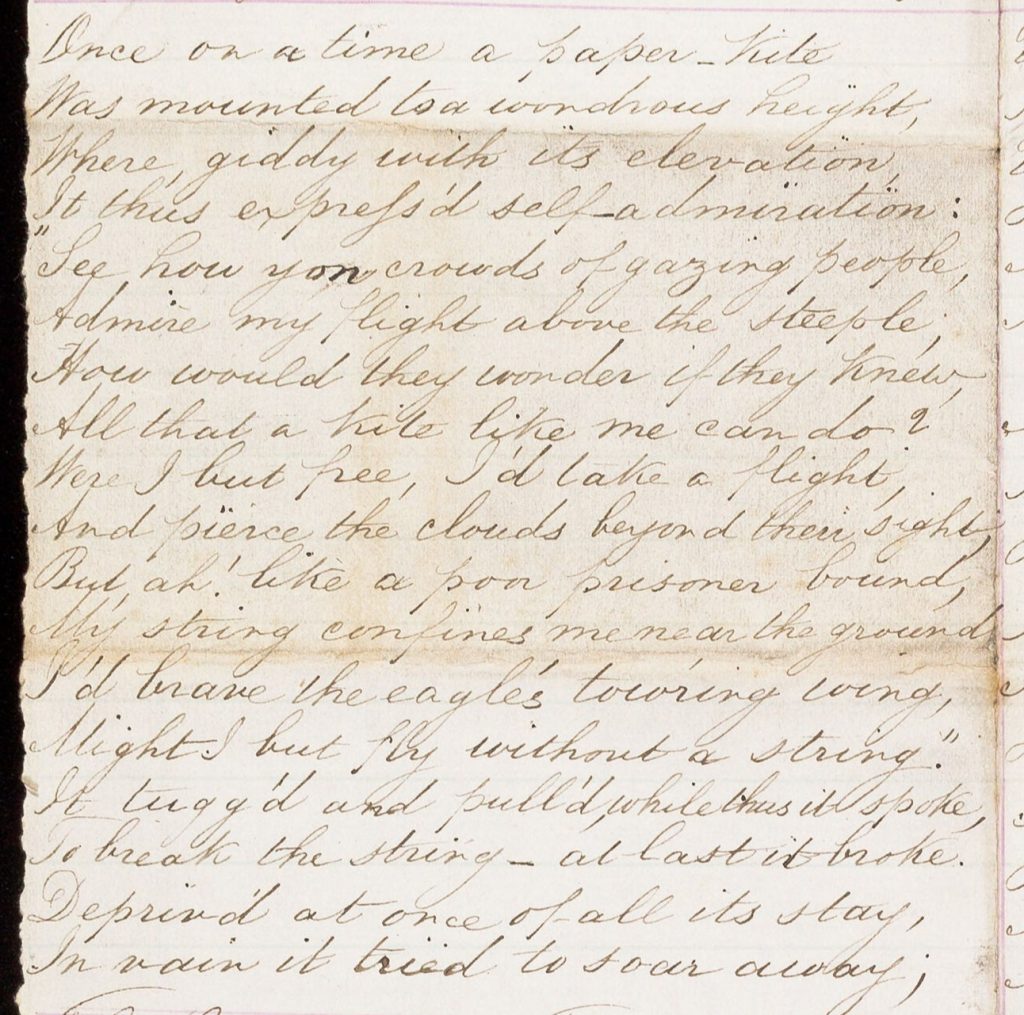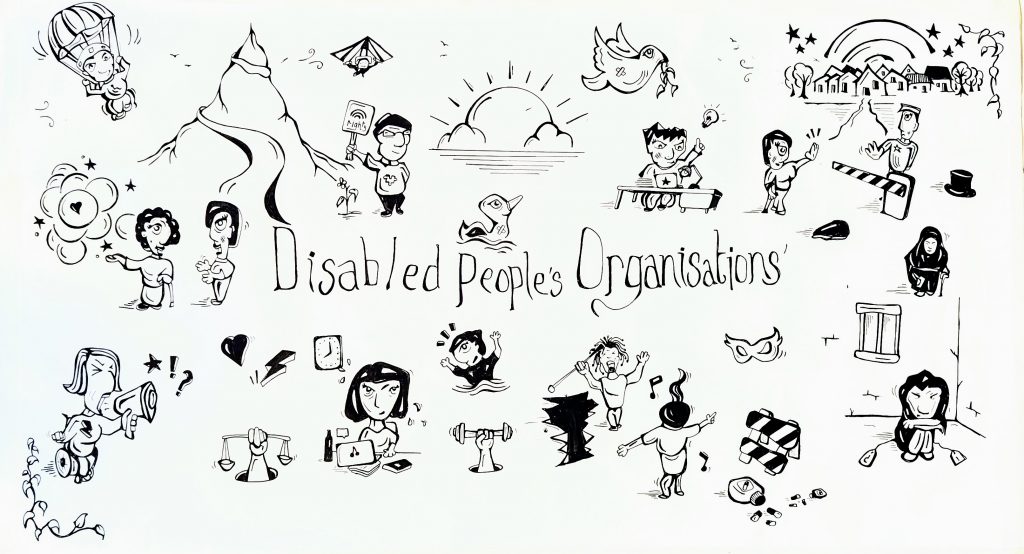Artwork shown as part of at York Explore during York Disability Week 2025 for “A Census of Disability Joy” — a new exhibition by local Disabled artists.
Drawing on the format of the 1851 and 1871 census, along with York Poor Law Union Workhouse Committee application and report book (PLU/3/1/1/89), where disability/impairment is being recorded and three creative outputs and efforts from disabled friends and colleagues, this piece offers a personal reflection on disability joy. For me, this includes themes of disruption, acceptance and resistance within a framework of dominant historical knowledges concerning disability.
While disability joy is an emerging term and theme, defining it is problematic. This is because it connects to both current experiences of discrimination and a drive to articulate pride. This piece offers a personal reflection on the term using archive records and accounts from three late, and great disabled friends and colleagues of mine.
Disruption – From photo and words of Steven Cole (1963 – 2016), who was given the label of severe learning disability (but that he resisted) and who had a visual impairment. In 2005 the very witty Steven started using JAWS (Job Access With Speech – a computer screen reader program that allows users to read the screen either with a text-to-speech output or by a refreshable braille display). Using JAWS Steven enjoyed creative writing and making text to speech synthesised soundscapes by varying the computerised voices, text formations and layout in a word processor. I recall Steven doing this in the workspace we shared, and him belly laughing with joy as he discovered interesting sound manipulations and reworkings of everyday realities based on his experiences. Through this Steven asserted many alternative ways of understanding the experience disability. An audio and text version of some of Steven’s creations can be viewed/heard here.
Acceptance – From photos and words of Barbara Stewart (1956-2016). Barbara said ‘…I try and use my disability if that makes much sense …’. This was captured in audio as part of some research exploring representation and identity issues about disability. Barbara would share stories about the negativity wielded against disability and the damning impact this had on people. But also the power of people with lived experience of disability to challenge and rework alternative. An audio and text version of this original recording from 2004 can be viewed/heard here.
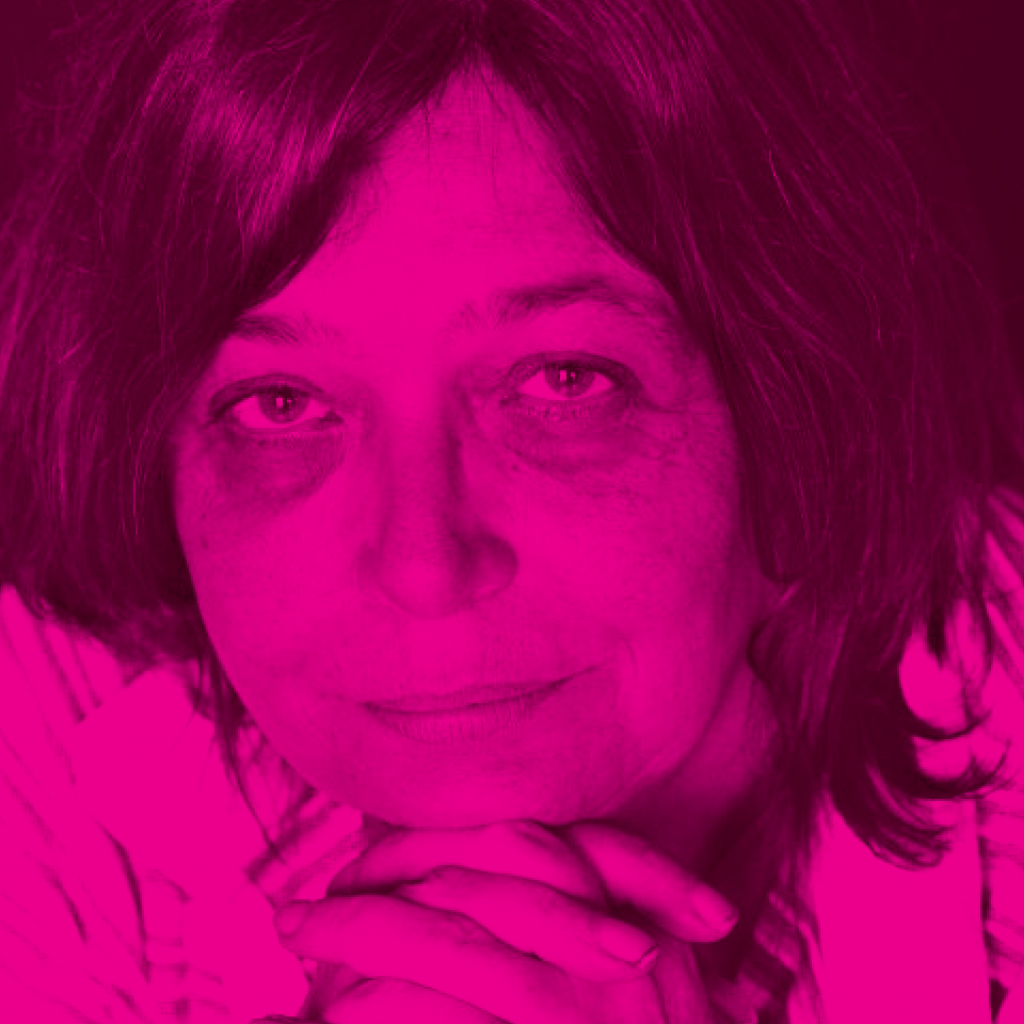
Resistance – From photos of, and a community reminiscence film about Lynn Jeffries (1956 – 2014). Lynn Jeffries was a disability rights campaigner in York. She made a significant contribution to equality and inclusion work in the city. Lynn was a champion of disability and human rights in York. Many people have remarked about her power and tenacity to resist and speak up. Lynn knew that getting disabled people to speak up about their everyday lived experiences of the barriers that prevent independent living would be transformational. Her message being that the more people that resist and speak up about being left behind the more likely we are to achieve a truly inclusive and accessible future. Originally made as part of York Disability Pride 2017 celebrations, the film can be viewed here.
The piece acknowledges that histories of disability stretch far back but how we understand it changes with the records we keep and the stories we tell. The inspiration was the idea of if, at the time disability first entered census records, disabled people themselves had had much more of a say in defining their experience, how would we see it today? The piece also encourages responses and reflections about what disability joy might mean to them too. Attendees are encouraged to add comments and doodles to the structure.


